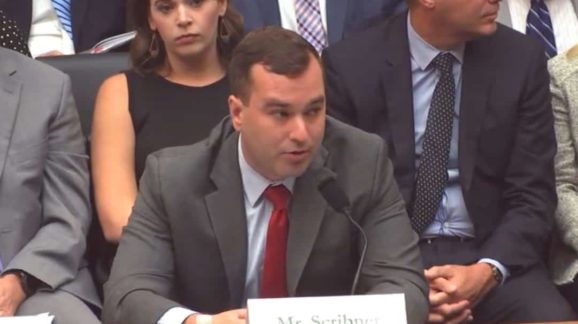Unleash Markets to Reduce Traffic Congestion

This morning, I testified before the Highways and Transit Subcommittee of the U.S. House Committee on Transportation and Infrastructure at a hearing titled, “Pricing and Technology Strategies to Address Congestion on and Financing of America’s Roads.” I argued in favor of eliminating outdated federal restrictions on road pricing, as pricing is the most valuable tool for addressing persistent peak-hour traffic congestion. My full written testimony is here. My opening statement is below.
Chair Norton, Ranking Member Davis, Chair DeFazio, and Members of the Subcommittee, thank you for giving me the opportunity to testify before you today.
Congestion is a persistent and growing problem facing America’s road networks. The challenge facing policy makers is how to address this growing problem. Given that traffic congestion is inherently a local phenomenon, the federal government has a limited set of tools to address it. Fortunately, in its role as a supporting partner to state and local transportation agencies, there are policy options available to members of Congress to promote effective congestion mitigation and management.
Even better, these tend not to involve increasing federal-aid highway spending. Rather, modernizing federal law to permit greater flexibility at the state and local level to price road use is the best way to address peak-hour traffic congestion that plagues many of America’s metropolitan areas.
Nobel-laureate economist William Vickrey, in a seminal 1963 paper, said of the then—and still—status quo of urban transportation management that in “no other major area are pricing practices so irrational, so out of date, and so conducive to waste.”
The problem, as Vickrey and other economists saw it, was scarce roadway space was inefficiently allocated by non-market means, so that the practical result of unpriced urban roads was queuing and a degradation of the network. With traffic flows increasingly unstable, travel times would lengthen and travel time predictability would worsen. In attempting to address this queuing due to a lack of pricing, policy makers would then make decisions to inefficiently expand physical roadway capacity, generally at great expense to society. This vicious cycle would then repeat.
To effectively address peak-hour traffic congestion and efficiently allocate scarce urban road space, Vickrey proposed an electronic variable pricing scheme to promote stable traffic flows, quite similar to today’s electronic transponder systems used by tolling networks such as E-ZPass. Variable road pricing is now generally viewed by economists as the most effective means to address peak-hour traffic congestion. Policy makers select a desired average speed to maintain and then let rising prices do the rest.
Physical capacity expansions in the absence of pricing can temporarily reduce congestion and improve traffic flows, but such improvements may be fleeting due to what economist Anthony Downs calls “triple convergence.”
Under triple convergence, traffic flows on recently expanded roads soon begin to trend toward their pre-expansion state of congestion, albeit with greater traffic volumes and the resulting benefits of that additional travel. In that sense, while roadway expansions can certainly benefit travelers in a given region—even at congested peak hours—in the absence of pricing, many of the potential benefits may be unrealized due to persistent network congestion.
Section 166 HOV/HOT conversions are likely the most promising near-term vehicles for implementing road pricing. Historically, HOV lanes have suffered from chronic underutilization. Converting HOV lanes to HOT lanes allows road authorities to make better use of lane capacity while providing motorists traveling below minimum HOV occupancy requirements a choice to pay for shorter and more predictable travel times.
However, existing exemptions and pilot programs by themselves will not be able to address the related problems of growing traffic congestion and aging highway infrastructure. Reconstruction needs for the Interstate Highway System alone are estimated to be more than $1 trillion over the next two decades.
If Congress wishes to address both this fiscal challenge and traffic congestion, it must reconsider the general federal tolling prohibition. It should also seek to harness innovative financing and management practices made available through public-private partnerships by expanding project eligibility and lifting the lifetime volume cap on Private Activity Bonds.
Public acceptance of congestion pricing is crucial to its success. At a time when urban surface streets are riddled with potholes and other road infrastructure is being neglected, the first revenue priority of policy makers should be to improve the nation’s tolled roadways to a state of good repair. Adherence to this fairness principle will do much to address public concerns that additional road charges will simply amount to more wasteful government spending to benefit politically favored constituencies.
Road pricing generally and congestion pricing specifically will be valuable tools going forward. The primary federal concern should not be the implementation of any given pricing project. Rather, Congress should focus on removing outdated barriers to road pricing and give states the flexibility to use these tools that best suit their own needs.
Thank you for the opportunity to testify before the Subcommittee, and I welcome your questions.
See my full written testimony for more detail. Video of the hearing is available here. Video of my opening statement is below.